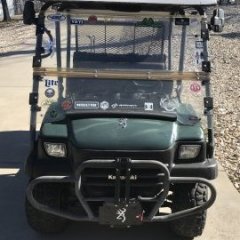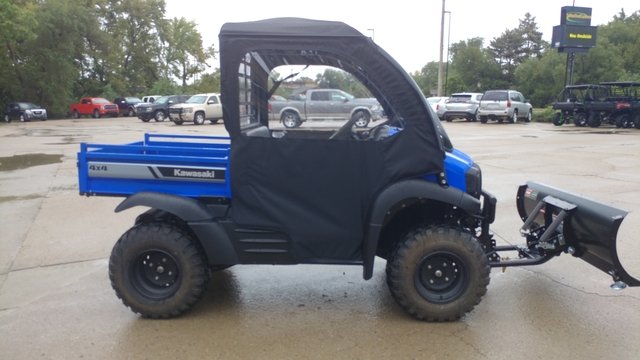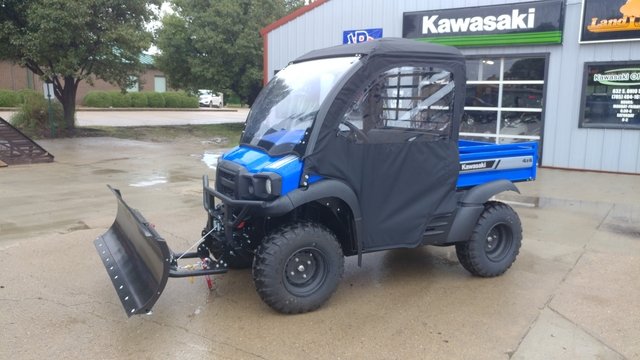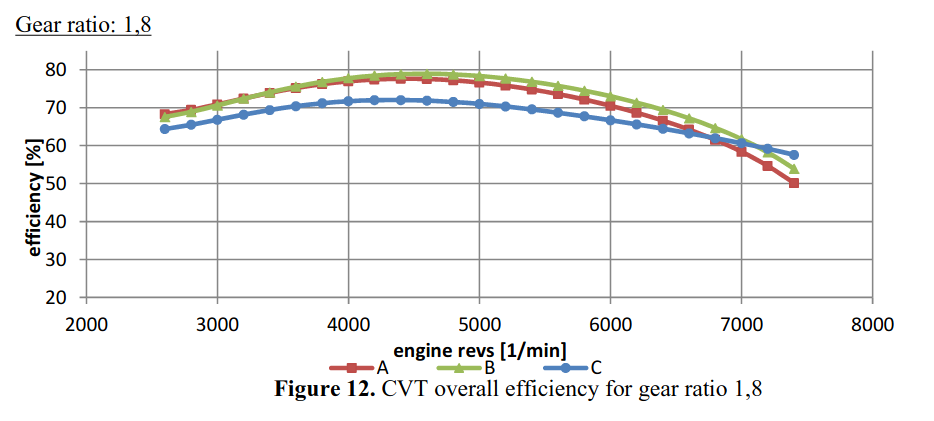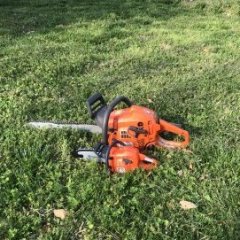Leaderboard
Popular Content
Showing content with the highest reputation since 12/05/2019 in Posts
-
Since I've seen some questions on this I took some pictures and will provide instructions on a valve adjustment for the UT400. This should be the same for the 550's and other various Coleman/Hisun single cylinder models with the cylinder slanted aft. I have seen several people ask of it is really necessary, and read several reports of valves being out of adjustment from the factory. My valves were .004" intake, and .010" exhaust with about 5 hrs on the machine. I've seen different numbers thrown around for factory spec, but I decided to go with 0.005". This is called valve lash. What is is is a gap between the rocker arm and the valve then the camshaft isnt opening the valve. Why does it matter? If it's too large the valve doesn't open all the way, if it's too small the valve dosent close. This can cause valve damage (overheating) as well as loss of engine power (burned fuel is going out exhaust rather than pushing the piston dow). Tools required : 5MM Allen wrench, 10MM box wrench, needle nose pliers, flat feeler gauge set, rags First you need to remove the fan cover on the passenger side. There is a cooling vent hose on the back side, remove the hose clamp and slide it off. From there there are 4x 10mm bolts holding the cover. The forward ones can be accessed from under the seat. Next remove the spark plug from the drivers side. Carefully wiggle the spark plug wire off. Grip it as low as possible and give it a little twisting motion as you pull it off to help free it. Its a tight fit for a socket, but there is a sheet metal wrench in the toolkit that fits it. Unscrew the plug and set it aside. This allows you to spin the motor over freely with no compression to fight. When you reassemble this is a good opportunity to switch to an NGK iridium plug for better performance/less fouling DR8EIX) Next you need to remove the intake and exhaust valve covers. The intake us the forward one. There are 3x 5MM Allen screws to remove. The Exhaust is the rear with 2x 5MM Allen bolts. Both covers have O-Rings instead of gaskets and are reusable. When you remove the rear be careful and use your rags as there will be oil that drips out. Next up we need to spin the motor over to top dead center. Grab each rocker arm and give em a little wiggle up and down. Spin the engine over by grabbing the fan with your other hand. Spin the engine over until both rockers have some wiggle and are loose. Once both rockers are loose slide the feeler gauge in like shown above. Try different feelers as needed to determine your starting spec. You should feel some drag but still be able to move the feeler without too much force. If you need to adjust, use the 10MM wrench to slightly loosen the locknut, then with the correct feeler gauge in place, tighten the top square nut while wiggling the feeler in and out. Once you have it right you need to tighten the 10mm lock nut without moving the square head bolt. Once the lock nut is tight recheck the clearance. That's it, button everything back up and make sure you have it all reassembled before running it again. If you find this helpful give me a thumbs up or comment. If you have any questions or need more help let me know. If there's interest maybe I'll do some more of these6 points
-
Hey Folks There are not a lot of good sources out there for troubleshooting and diagnosing ECU problems with the Massimo Buck, Bennche Bighorn, Bennche Cowboy, & Cazador machines that use the Delphi MT05 ECU. They are all basically the same with different badging, so I thought I'd share some info that I found during some searches. I was trying to help someone diagnose and repair a hard starting issue. The ignition coil was throwing a 0351 code. I discovered how to read codes without an OBDII code reader. The following procedures should help you check your fault codes and clear them if needed. Fault Code Troubleshooting for Delphi MT05 ECU on the Massimo Buck 400, Bennche Bighorn 400, Bennche Cowboy 400, and Cazador 400 *NOTE: The MT05 ECU is not really OBD 2 compliant. It is much more similar to an OBDI system. The MT05 ECU controls either 1 or 2 cylinder engines commonly found on Massimo, Bennche, and Cazador. Much of the ECU info was found here: https://netcult.ch/elmue/HUD ECU Hacker/Delphi MT05 Manual.pdf Delphi EFI System Design Delphi EFI employs 5 sensors to monitor engine performance. 1. Crankshaft Position Sensor 2. Coolant Temperature Sensor 3. Oxygen Sensor 4. Throttle Position Sensor 5. Manifold Air Pressure/Manifold Air Temperature (MAP/MAT) Sensor Delphi EFI employs the following system components. 1. MT05 Engine Control Unit (ECU) 2. Fuel Pump 3. Multec 3.5 Fuel Injector 4. Idle Speed Control Valve (Idle Stepper Motor) 5. Multec Ignition Coil 6. Fuel Vapor Canister Purge Valve Using the Digital Dashboard to Decipher EFI Trouble Codes In addition to commercially available diagnostic scan tools (Big $$$), you can use the engine warning light of the Siemens dashboard to diagnose most of your EFI problems. The digital dashboard receives signals from the MT05 ECU, and the engine warning light will flash a diagnostic trouble code (DTC) if the ignition key is switched on/off for three cycles. When you turn on the ignition, the engine warning light will illuminate, which indicates the EFI system is operational. After the engine is started, the engine warning light will extinguish if the EFI system is working properly. However, if the engine warning light remains illuminated, it indicates the EFI system is not working properly, and there is a system component failure. Deciphering Diagnostic Trouble Codes To read the diagnostic trouble code (DTC), open and close the ignition key three times in rapid succession, as follows: open/close—open/close—open. At this point the engine warning light will flash a DTC which indicates the fault in the EFI system. Refer to the attached fault code table to identify the corresponding problem. The engine warning light will emit a sequence of flashing lights. If the light flashes 10 times, the translated number is 0. If the light flashes one time, the translated number is 1, et cetera. For example, if the MAP/MAT sensor is disconnected, or the connector is shorted to ground, the engine warning light will flash in the following manner (This is an example only). The engine warning light will flash 10 times: The first number of the DTC is 0 After an interval of 1.2 seconds, the engine warning light will flash 1 time: The second number of the DTC is 1 After an interval of 1.2 seconds, the engine warning light will flash 10 times: The third number of the DTC is 0 After an interval of 1.2 seconds, the engine warning light will flash 7 times: The fourth number of the DTC is 7 The resulting DTC is P0107. NOTE: For the system I was helping to troubleshoot, I suspected an ignition coil failure due to the code that was thrown. When it was checked, it was flashing: 10, 3, 5, 1. The 10 represents a 0. So the actual code was 0351. After finding the code, the coil wire was checked and discovered loose at the spark plug. Once it was pushed fully on, the problem was fixed. Most likely, this problem was created after the owner had pulled the spark plug to check the gap. The ECU was rebooted using the procedures detailed below with no more codes being thrown. If there are other fault codes, the engine warning light will flash the next code in 3.2 seconds after finishing the first sequence. After all existing fault codes are flashed, the engine warning light will repeat the fault codes in a loop sequence, until the ignition key is turned off. To clear fault codes you either need an OBDII Fault Code reader and a Delphi 6 pin connector adapter cable that you have to order from China and wait 8 weeks…OR....you can simply reboot the ECU using the instructions detailed below. Rebooting the ECU Perform the following steps to reboot the ECU. 1. Turn off the ignition for 15 seconds. 2. Turn the ignition on/off for 5 cycles. Make sure each cycle lasts about ½ second, verifying the start of the fuel pump for each cycle. If the fuel pump doesn't start during any cycle, begin the entire reboot procedure from the beginning. 3. Turn off the ignition for 15 seconds. TPS (throttle position sensor) re-learn procedure after rebooting ECU. This should be done after replacing the TPS or the ECU....and it is advisable to check proper idle after rebooting an ECU too. Source: ECU Hacker (Reworded process slightly to make it a more sensible flow in my mind): 1. Turn the idle screw one full turn clockwise before starting 2. Start the engine, and run at low idle until the engine warms. Maybe a couple of mins. 3. Idle should be above 1500 rpm. If it isn’t, turn it up to 1700 then shut the engine off. Do another reboot of ECU. 4. Restart the engine and let it stabilize at 1700 rpm. Then turn the idle screen down to 1500 rpm and let it stabilize for a few seconds. Once it stabilizes, set to the final recommended idle speed for your machine. The placard under (or behind) your seat should show idle speed, valve adjustment, spark gap, etc. Typically the 390 cc engines in the "400" machines run at 1600 rpm idle. 5. Shut it down. Wait 10-15 seconds before restarting. The procedure is now complete. Final Notes: I have included pictures of an OBDII connector and the Delphi 6 pin connector in case anyone wants to go buy stuff off ebay or local parts suppliers and build a connector to use for an OBDII reader. But...you can save money and simply do the same thing with code reading and resetting using the check engine light on your dash. Some folks prefer to do it with code readers. Hope the information provided helps if anyone ever needs it but cannot find it in repair manuals. I discovered most of this in some motorcycle forums. The source for the diagrams is here: https://netcult.ch/elmue/HUD ECU Hacker/ Be advised: I am not a service technician. I do not endorse any manufacturers. I do not get paid to help, nor do I want to. This is just a hobby of mine. I enjoy working on things and solving problems. If you run into a weird problem that stumps you, give me a shout. I may be able to give you some ideas...or not. Just know, that troubleshooting thru emails can be challenging. The more info you can provide, the better. Otherwise, I will probably ask you a ton of questions. The good news is, the Delphi system used on these machines is essentially an OBDI and it is very simplistic. If you are methodical and patient, most of your "problems" can be figured out thru a process of elimination. Always go for the simple things first before throwing money and sensors at a machine. Take care - JT5 points
-
In order to connect with the ECU we need two cables. The first is a USB ODBII cable. HUD ECU Hacker’s documentation has a lot of different confusing options, but here’s what I went with and managed to get working, the cable is called “VAG KKL” it is a USB to ODB2 cable. It is available from a variety of sources for $10-15. The second thing we need is a “6 pin delphi to ODB2” adapter cable. It is also available for a similar price. In my case I ordered both from ebay, but there are other sources. Once we have our cable in hand we need to find the plug it in on your machine. My personal rig is a Coleman UT400, but the wire location should be similar for all Hisuns. My cable was located under the middle of the seat area. Just inboard of the battery, where the main wire harness split loom runs. The cable is a 6 pin (3x2) with a dust cap. Remove the dust cap and plug in the 6-pin end of the Delphi adapter cable. Note: When I was done, I left the 6-pin adapter connected, and zip tied it so it now runs to in front of the battery for easier access in the future. Next download and install HUD ECU HACKER DOWNLOAD Open HUD ECU Hacker on your PC It should prompt you to choose a driver to install. This particular cable uses the “CH340” driver (First choice on the menu) click to install, once installed hit the X in the corner to go back to the main page Once the driver is installed plug in the USB Cable, and plug the ODB2 end into the 6 pin adapter. The red led on the adapter should light up indicating it has power. Drop down and pick a com port on the main screen, it should show the VAG KKL adapter as a com port. Click connect on the main menu. It will pop up a bunch of fast scrolling text indicating it is connecting. Once connected you can click through the various tabs to see different data sets. The main menu also has the option to show fault codes, clear fault codes, reset the EPROM back to factory. The other function that may be helpful is recording a log file. You can record a log while operating the unit, and come back later and replay it to try to better diagnose what is happening. Within the various pages you will see the reading from each sensor. Sometimes a sensor reading will be off enough to cause running issues, but not enough for the ECU to realize its an issue. For example if the engine thinks it’s really warm, but its actually cold, it may not inject enough fuel to start. There are also more advanced functions, like adjusting fuel mapping, but that is beyond the scope of this tutorial. Full HUD ECU Hacker Documentation (Very technical reading) If you find this helpful give me a comment below or a thumbs up.5 points
-
White smoke is usually coolant leaking into the cylinder. Sounds like a blown head gasket to me.4 points
-
Just wanted to give update . It was the ecm. Put new one on and got spark immediately to front cylinder. Ran but smoking and no power. I checked back cylinder and no fire. Pulled coil to check with meter and found wire was not getting good connection where it plugs into coil. All good now . She will scream !!!. Next is to figure out why 4x4 switch wont turn. Thanks for all the imput....4 points
-
Hello to anyone who reads this. I am Jon and I own J&M Outdoor Power, a very small, small engine repair shop. I was approached by Coleman about 6 months ago to become one of their Warranty Centers. I recently received 3 different UT400's and a UT500 all with similar issues. These units range from 2 months to 2 years old. Customers state that the unit(s) was/were running fine, then heard a pop and a loss of power, two would no longer start. The two that would run would not achieve normal operating speed (around 20mph I would say) without redlining the RPMs. I quickly found that the Valve lash on each unit had become too large on some(both intake and exhaust) and too tight on one(just intake). After setting the gaps to .005(I found multiple different people suggesting bigger and smaller gaps, but no definitive Coleman Spec number yet) every unit starts, runs, and achieves top speed without issue. I don't know how many others have come across these issues, and I wanted to get something out on the web for others in the same predicament. Please let me know if you have had similar issues. Edit: I realize that this will not be a fix all solution for this issue, as the oil level and condition should be verified before moving to the valves. Many times improper oil conditions will cause valve lash to change. These units all have good oil and proper oil changes.3 points
-
Hello again! I now have a pretty good running Coleman UT400 after a top end rebuild, wet clutch rebuild and a repaired crankcase... ! It plows snow great, but I was also having the jumping out of gear problem, mainly reverse, but a couple times out of forward. I would quickly place it in N and then let the engine idle down and shift again. This worked most of the time. I did some research and found that some have modified the shift linkage. The problem with just adjusting the shift cable is that it really NEEDS more throw, not an adjustment. From what I've read and viewed on the Internet, the linkage arm needs to be about 3/4" longer to gain more throw in both directions. On YouTube, the guy had to remove the shift linkage hole trim and notch the side of the dash to get the shift linkage off the pivot pin. BUT this is NOT necessary. When the "E" clip has been removed and you fish it out of the firewall somewhere, the shift lever is now loose. I had to pop the top of the shift knob off, remove the retaining screw and then heat the lower portion of the knob to get it to come off the lever. Once you have the shift lever loose, push it towards the right to slide it off the pivot shaft. But it won't come off just yet. Use a small pry bar/screw driver and slide the nylon flanged bushing out of the left side of the lever. This lets the lever slide off and get into a "loose" condition and it will twist and come right off without removing the dash trim, that could be a bugger to get back on correctly. Once the lever is off, press out the other bushing so when you're welding on the linkage arm, you don't melt the bushing. I found a piece of scrap metal the same thickness as the lever arm, just over 1/8" thick, close to 3/16". I cut my arm and beveled the edges for better welding. I added a piece just over 5/8" long and kept about a 1/16" gap between the arm and the new piece. Once welded on bother ends, it adds up to just about 3/4" or so. I reinstalled the lever after painting it and did an adjustment on the cable. By the way, it's easier to remove the cable from the bracket on the frame. This gives you more clearance to maneuver in that area with your hands. ALSO, you will need to get a 12" adjustable wrench and slide it over the cable mounting bracket and tweak, to the front, the steel so the cable is pointed upward a bit to now realign with the new longer shift arm lever. There's more than enough metal for the tweak and it will line up perfectly. I now bottom out the shifter on the transmission BEFORE I run out of throw on the shifter... I've tested it just a bit so far and it shifts much better with the longer throw. One of the Coleman authorized repair facilities said that he worked with Coleman to get a new part that's longer by 3/4". He's modified a few and it works perfectly for him. Just doing the cable will just short you on the other end. Here's some pictures of my modified shift lever etc.3 points
-
I have come to the conclusion @Joe Toup must be one of the very best, most helpful members here!!! He has been tireless sharing his knowledge and expertise helping me solve a problem. I am sure I'm near a good solution thanks to Joe!!👍👍👍3 points
-
There are actually 5 disc brakes on these machines. 1 for each wheel and 1 on the rear driveshaft for the parking brake. I've read several complaints of the parking brake one being too tight from the factory so I would check the cable and make sure there's a little slack when the parking brake is released. If that is good I would jack up each corner Individually and spin the wheel to listen for noise and feel for dragging. That should help pinpoint where the issue is.3 points
-
anybody else getting spam /fraud private messages on here besides me? How do I report it? He calls himself Maria .under ORANGE 15 name.. wants to hook up in UTVs .. con artist in Pakistan probably.. Cant ADMIN block this crap ? geesh3 points
-
Just looked at the Lowes add for that, pretty much looks like an MSU 500/700 that Hisun made for Massimo back then. Take a good look at the badging on parts to see who it's actually made by, my guess is it's still Hisun.3 points
-
Its my 2nd day on this plat form. I'm new here in this community but in these two days I got some Premium recommendations. I was in search of these recommendations form the past few months. Thanks you so much for creating such kind of the community. Regards: Zeeshan Mehmood3 points
-
Put 15 miles on it today mostly on the beach in 4WD--the front diiferential is definitely smoother and quieter, and engaging/disengaging 4WD and front lock more positively with the ATF...3 points
-
3 points
-
3 points
-
3 points
-
3 points
-
3 points
-
3 points
-
3 points
-
My dealer just got parts this morning (purchased on Jan. 20th) - I should have it by the weekend!3 points
-
2 points
-
2 points
-
The main trick is tilting the front end up. Block the rear wheels and jack up the front end at least a foot. A convenient ditch works well also.....rear wheels in a shallow ditch. The head bleeder screw should be opened. With the engine NOT running, almost fill the radiator (leave some air to avoid a mess) and burp (squeeze the lower hose line before the metal tube at the engine base passenger side floor area). Watch the radiator and the the bleeder. With the radiator "higher" than the head bleeder, the air should be bled and coolant dribble out. Close the bleeder and refill radiator (your clue you displaced the air with coolant) and start the engine. Burp more while running and if you get the circulation going the hoses will warm up. More bubbles should surface at the radiator filler neck. Shut off engine. Open bleeder and release any air in the head. The puke jug needs to be filled about an inch above the full cold line. Use a shop towel as a "seal"and use an air nozzle to SLIGHTLY pressurize the puke tank removing the air from the tubing line to the radiator neck. Then the radiator starts to overflow, a third hand can install the radiator cap. Run the engine and determine the head and hoses are at the close to the same temperature (as in warming up) through out the system. IR temp gun....fairly cheap now....can get real numbers. Scan the radiator, hoses, cylinder and head.....if all close you are done. Recheck fluids when done riding. Recheck the bleeder and top off the puke jug as required.2 points
-
I finally found a service manual in stock and was able to make the adjustments per the specs!2 points
-
Problem was using cheap eBay injector. Bought quality one and hot pipes went away. Running like new.2 points
-
after all the complaints on this forum about the other brands of utv's, i will stick with my mule...........not the fastest, not the most powerful, but it hauls stuff around the house and plows snow just fine..........2 points
-
Couldn't have said it better myself. For a guy who hates Hisun he sure spends a lot of time posting in the Hisun forum...2 points
-
Hisun Axis 750 for me. Around 70 hrs., and only issues have been the plastic air/oil separator and thermal switch. That's about $40 and an hour to deal with b/c I enjoy beers when I play mechanic. Everything really smoothed out after break in. I'd buy again2 points
-
2 points
-
2 points
-
Yep. Mine is the same. This shows you have a full tank. The indicators will disappear from right to left as it consumes fuel.2 points
-
I'm having a similar issue with my Coleman UT400, but it started after we left it out in the rain over night (we usually keep it in the garage). We were expecting a large delivery, so needed the garage space for a couple days, and got an unexpected rain shower. When I went to bring it back inside, it turned over fine, but would not fire. I ordered/replaced the CDI, voltage regulator, and coil and still would not start. Cleaned the plug, and it fired right up ... this time. After a few short runs, it quit starting again. The plug was wet fouled with fuel. The same NGK DR8EA as mentioned above. I picked up a couple new ones, but now I have to rotate those in about every 3 starts ... either it won't start, or shortly after starting, it will stall and not refire. Also, when a new/clean plug (I clean them with alcohol and then sandblast them real quick) is put in, it will crank in a couple of seconds, but subsequent attempts will take running the starter motor for 10-15 seconds before it fires. Googling brought me to a page that said Hisuns were bad about bad/dirty injectors causing fouling (I have always run premium with stabilizer in it), so I ordered and replaced the injector too but experienced the exact same issue. Seems like the next thing to try would be the ECU, but that's a little pricey, so I'm hoping for other suggestions before I go there. Now, I did try a hotter plug (DR7EA) and it seems to not foul as quickly, but from the get-go it has taken a lot of cranking on the starter to get it to start up, but seems to run better once started.2 points
-
Have the head and block mating surfaces checked. Sure sounds like a warped head or maybe a crack between the cooland and oil passages. Common occurrance when overheted and run until it runs no more. If warped, might be able to have the head and/or block machined. A crack can also be repaired (maybe).2 points
-
you have air trapped in the head. try bleeding out air at head and at waterpump ....or .you have a bad head gasket .. Hisuns are not for riding, they are for working on2 points
-
Do a little reading here on the forums and you'll find lots of issues with the Hisuns from that time frame like mentioned above. I passed on a '16 with fewer miles for the same price.2 points
-
That is just normal operation and the same with cars and trucks! But the issue is with these the firewalls are not insulated!!! so we feel it2 points
-
I also have a Joyner Renegade. It's a 2014 year model R2 (2-seat version). Bought it 3 yrs ago for $7k. 2014 is the first year they started putting the 1100cc engine in it. I don't have first hand knowledge of the early models but when researching for my machine, I've read that there were many quality control issues with Joyner machines. The Trooper and Renegade uses an automotive style engine, clutch and 5-speed transaxle. These engines are quite reliable - John Deere put the 800cc engine in their 825i and even Kawasaki (Japanese manufacturer) put the same engine in one of their SxS models. The Chery engine is used in many lesser known brands of SxSs. This machine isn't designed to take a high speed jump off a ramp; it's a utility vehicle that may be more at home on a farm or easy trail riding. The weak point seems to be the bolts that hold the ring gear in the differential. You can put in higher grade bolts. I like my ride. I've never had an issue with mine except the brake master cylinder - replaced it a few months ago. Some parts are available on Amazon. You may have to do a lot of your own repair work as service and parts are hard to find. My opinion is the $5k price is too high for a "well used condition" which imples some hidden issues. Check you state laws on street legal SxS. AZ allows them as does many other western sates (some with severe restrictions).2 points
-
I have never liked the cord in the glove box to charge the E1. It takes up to much room and in the winter the cord is very stiff. So I decided to install a charge port like the EV's have. I purchased a weatherproof socket to install in the side of the E1. Wired the charge cable to the socket and installed it. So much easier now to plug the charge cord into the socket, and I have more room in the glove box. On another note: Since I have owned the E1 I have noticed a rattle in the right front area but I never could locate it until last week when I had the E1 up in the air on a lift. When I grabbed the right front wheel it a play in it. So I removed the wheel and torqued the nut on the drive shaft and the play is gone. I am thinking when it was assembled the nut was just hand tightened and the cotter pin installed. I also found that the left front nut was not tight either. Backs were OK.2 points
-
Hey everyone, new to the forum, just picked up a coleman 400 from tractor supply this week, and of course it was missing a couple small plastic parts. Being as I have a handy 3d printer laying around, I just made new ones. In the downloads portion of this site under the coleman section I uploaded files to print new circular caps for the tie-down holes at the front of the bed, a new cap for the end of the frame near the hitch, and a dummy clip for the seat belts. Disclaimer, always wear your seat belt while riding. That being said feel free to download and print! Check your local library for a printer if you don't have one, or there are online printing services available.2 points
-
Same thing, though the Kohler might have two coils if it's a V-twin (jut one if it's a "boxer"). Using that same tester on the Mule may reveal something. The resistance tests shown in the manual should be pretty positive. $43 (w/ free shipping) on eBay for a new genuine Kawasaki part.--p/n 21171-7035 is what you want: Interesting little beasts, these earlty mules--only 400 cc, not much HP (10.5 @2400)--but GOBS of torque at low rpm (22 lb·ft @ that same 2400 rpm!!!). Peak torque on my 24.4 HP (@ 7500 rpm) Hisun 400 is only 17.1 lb·ft☹️--also @ 7500 rpm, which in reality is an engine speed the CVT will never allow (except maybe when "pedal-to-metal" on an open road somewhere). I suspect real Hp that actually makes it to te ground is more like 15-18. Rubberband CVT efficiency is just 40 to 80% or so depending on a number of factors (drive ratio, belt stiffness, etc.) In general hihger "gears" (numerically lower input--> output ratios) are the least efficient. Here are some interesting charts from a great study "The analysis of an influence of rubber V-belt physical properties on CVT efficiency" by A Kot W Grzegożek and W Szczypiński-Sala of the Cracow University of Technology: (belt "A" is the most flexible tested, belt "C" the least)2 points
-
As the title suggests, today marks 120 days and 520 miles since I bought my 2020 UT400 from Tractor Supply. I like it, here;s a synopsis of my experience so far: Delivery on 10/29/2020 was uneventful, BUT my first ride was interrupted by the damned undocumented seat belt safety "feature", the staff at TS knew nothing about it, but somewhat accidentally I found the driver's belt was wired and "bugged"--problem #1 solved;; Next I had to screw around with the State of Florida to get it registered and titled--that took a month and my trailering it 150 miles round trip to have it "inspected' and documented as a 'low speed vehicle'"; Got it titled on 11/25/2020; At 13-15 miles or so it decided it did not like shifting into reverse--the shift cable adjustment is finicky, with examination and trial and error I developed an adjustment procedure around the neutral position; At 15 hours I changed the fluids as recommended; Next, nothing major for the next 400 miles when I changed the front and rear gearbox juice just to make me happy; Today I drove it to the beach (2.5 miles East, including 1.2 miles at 45+ mph (50 on the "Clock", 45 on the GPS)--the dog and I had a great time. This was the 4th or5th time I've had it "on the road" at 40+--it seems to like or at least tolerate it. Beach, dunes, deep sand no problems. 26 mpg overall since new--not too bad. It's a well engineered and built machine however Coleman and Hisun are shooting themselves in the foot with their crappy documentation--I've contacted both but they don't seem to care. I like it!!!2 points
-
I just changed the gear oils in my 2020 Outfitter 400 a couple days ago--used Supertech (Walmart's house brand) 75W-90 GL-5 gear oil, which is made by Valvoline--Its what i used it in my 2003 515 HP 2003 Mustan g Cobra, thatr's why there was a nearly full bottle on the shelf in the barn..--use it in my 2009 Honda Silver Wing too. Heck, I'd use it in anything without hesitation...2 points
-
2 points
-
you know its funny..... we havent had a winter down south like this in 100 years. Biden gets elected and BAM!!! HELL FROZE OVER !!!2 points
-
sometimes that can be a sign of an ignition system part failing.. i'm not up to speed on the Massimo ignition systems as to if there magneto and flywheel fired, or CDI off of battery. had a similar issue with a car awhile back, run and get warm and shutoff, wouldn't restart for awhile until cool. turned out to be the ignition coil. after it dies i would check for spark, either by removing the spark plug and reinstalling the wire and grounding the spark plug against the engine and looking for spark, or by removing the plug and spraying carb/parts cleaner or starting fluid down the plug hole or intake.2 points
-
Hey guys. I am pretty new here but I came up with a crazy idea and executed it. I put Hoosier drag racing slicks on my '21 Turbo S Velocity and went to the 1/8 mile drag strip lol. I have a stage 6 tune and a bunch of Aftermarket Assassins stuff. Anyways, thought I would share. YouTube below. Racing is at the end at the track and vs a heads/cab truck on street.2 points
-
2 points
-
That is outstanding news!! Now to get it out to the dealers.... I know a good machine shop...maybe they can send me a drawing and I can get some made for us.2 points
-
I wonder if it involves the valve cover breather freezing up in cold weather causing oil leaks2 points
This leaderboard is set to New York/GMT-04:00

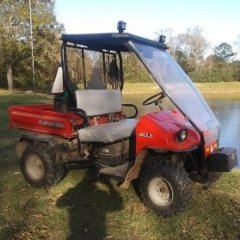
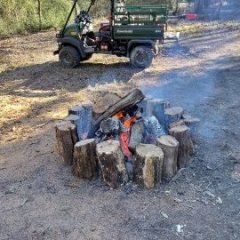
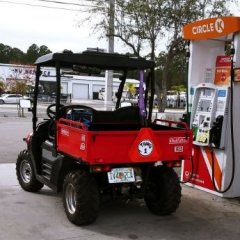




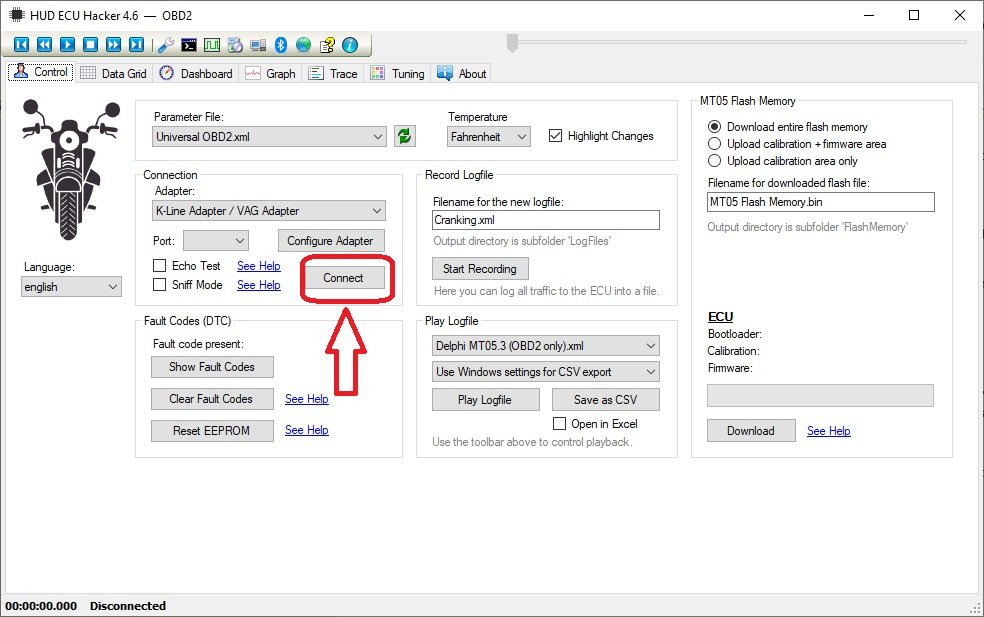






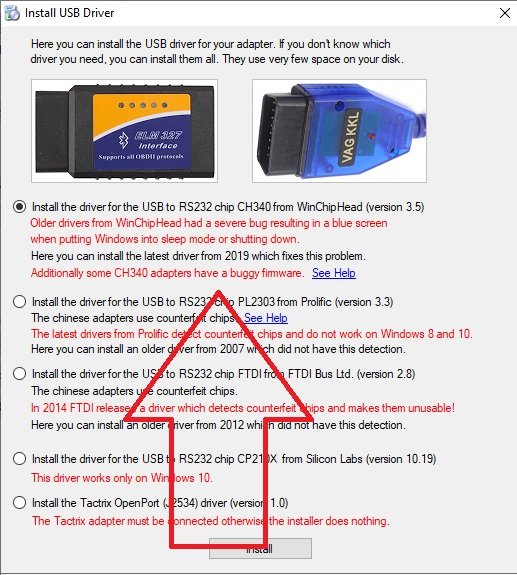




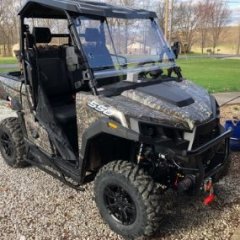

.thumb.jpeg.066fe53fd45b5795c37b2d989ac3a506.jpeg)



